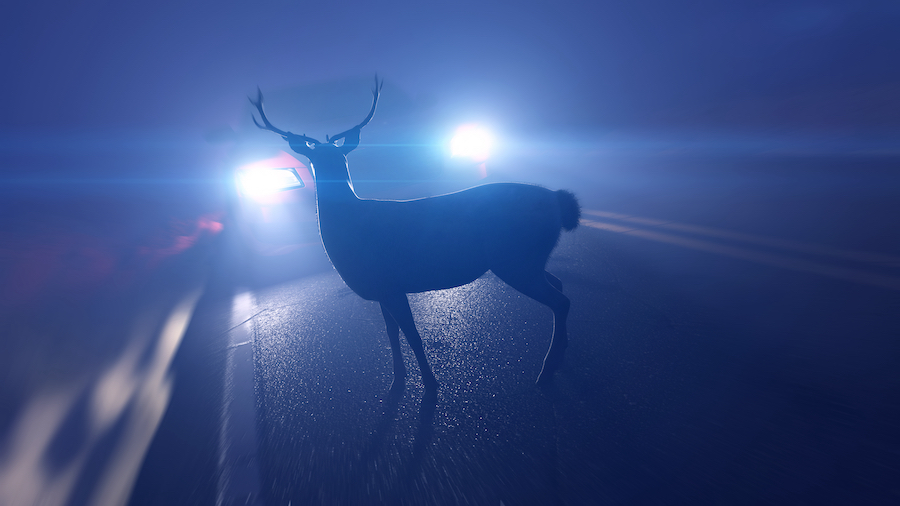
More deer-auto collisions occur in October through December than any other time of year and they peak in November, so drivers need to be especially careful. With hunting and mating season in full swing, the deer population is on the move. Deer season and deer crash season are one and the same. When cars and deer meet on the highway, it can have catastrophic consequences for drivers. Below are some defensive driving tips to help avoid hitting a deer.
How to avoid a deer collision:
- Watch for deer signs. They are placed at known deer-crossing areas. Reduce your speed and increase your distance between your vehicle and other cars when you see a deer sign. Extra room may give you more time to react if a deer crosses the road in front of you.
- Look out for the group. Look for other deer after one has crossed the road. Deer seldom run alone.
- Pay attention to the clock. According to DeerCrash.org, the most active time for deer is in the early morning and evening hours. Reduce your speed at these times and use your high-beam headlights if there’s no oncoming traffic to see the deer better.
- Use your horn. Slow down and blow your horn with one long blast to frighten the deer away.
- Regularly clean and inspect your car. Keep your windshield and headlight lenses clean so you can see clearly. While you’re at it, make sure your tail lights are clean so drivers behind you can see when you tap your brakes.
- Don’t swerve. Brake firmly when you notice a deer in or near your path, rather than swerve to avoid them. It can confuse the deer as to where to run. Even worse, you could lose control of your vehicle. Don’t risk running off the road or into oncoming traffic. When compared to hitting oncoming traffic or a fixed object like a tree, hitting a deer can be less deadly.
- Wear your seat belt. Most serious injuries in car/deer crashes occur because people were not wearing their seat belt.
What to do after a deer collision:
- If your vehicle strikes a deer it’s best not to touch the animal. The frightened animal, in attempting to move, could hurt you or itself.
- The best procedure is to turn on your hazard lights, get your car off the road, if possible, and call the police.
- If you can’t move your car, or the animal carcass is blocking traffic, alert the authorities so they can clear the roadway.
- Document the incident by taking photos of your vehicle damage, the roadway and any injuries sustained.
- Check to see if your vehicle is safe to operate. Check for leaking fluid, damaged lights, loose parts or other safety hazards. When in doubt, call a tow truck.
- Contact your insurance agent or company representative to report any damage to your vehicle.
An ounce of prevention is worth a pound of cure. However, if you have a disaster, auto insurance can help protect you from financial ruin. A collision with a deer or other animal can be covered under the optional comprehensive portion of your personal auto policy. Comprehensive coverage may help pay to repair or replace your vehicle if it’s damaged when you hit a deer. Your vehicle must make physical contact with the deer for the crash to be covered under the comprehensive insurance on your policy. Swerving to miss a deer and crashing into oncoming traffic is considered a collision claim, not a comprehensive coverage claim. Contact Scherer Insurance to learn more about comprehensive auto insurance.
How can I buy auto insurance in Oklahoma?
There are two easy ways to get a quote or request more information for comprehensive auto insurance in Oklahoma:
- Call/Text (405) 605-9891
- Email jp@schererinsurance.com
Resources: